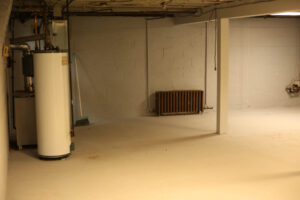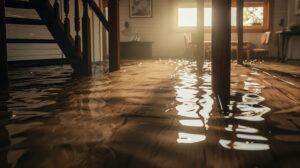Visible cracks, mold, and unpleasant smells caused by dampness are some of the major signs that your basement walls could be leaking or packed with moisture. Homeowners know that a leaky basement is a serious problem that creates a health hazard and damages property. The best remedy for this issue would be to install a waterproofing material that prevents water from entering the basement. Whether you are fixing minor or major leaking problems, you need to ensure everything is done right when installing a waterproof material. In this article, we will be discussing the dos and don’ts to remember when waterproofing basement walls.
Dos
- Do: Identify the source of moisture
Concrete is a porous material and because of this, you will often see wet streaks that indicate the source of a leak. It is crucial to look for streaks at the corners of the basement window, between mortar joints, along cracks, and around pipes where they sip in or exit such as a sewer pipe or water-supply line.

First, find the source of moisture, and eliminate it!
You need to do further sleuthing if the entire wall surface is wet. You can do this by drying the area of the wall with a rag, then attaching a piece of aluminum foil (1-foot square) to the wall using duct tape. Check how the underside of the foil feels by peeling it off after 24 hours. If it remains wet, water is seeping in from the outside. If it turns out dry, moisture could be originating inside the basement.
- Do: Clean and Prepare the surface before waterproofing
It is important to remove mold and efflorescence before waterproofing to ensure the waterproofing material adheres to the underlying surface. Efflorescence refers to white, powdery, and crystal-like deposits that remain on the basement walls or floors when water-soluble salt compounds in the masonry dry out on the surface. Any traces of mold around the basement walls suggest that moisture or water is present and should be removed to prepare the surface for waterproofing. You also need to remove any old paint or coatings first before waterproofing the basement walls that were previously painted. You can use sandpaper, a wire brush, or a chemical stripper to get the job done. Clean, dry, and grease-free basement wall surfaces deliver the best waterproofing results.
- Do: Fill cracks with hydraulic cement
Most cracks often occur at the bottom of the basement walls and are caused by a standard construction procedure that results in what is known as a cold joint. A cold joint is a weak spot in the foundation between the footing and the wall where cracks can develop as a result of lateral pressure from the soil and the shifting and settling of a foundation. Hydraulic cement is mixed with water to create a heavy putty consistency. It is made up of additives that cause the cement to expand and contract rapidly. Filling cracks with hydraulic cement allows the cement to push deep into the cracks and crevices when it expands, forming a watertight bond.
Don’ts
- Don’t forget interior drainage solutions
Installing a drainage channel inside the basement beneath the floor keeps the basement walls dry. It resembles an exterior French drain that has a perforated pipe covered on top. However, the only difference is that the interior foundation drain is installed under the existing foundation concrete slab instead of its exterior perimeter. It collects water and any runoff that might seep into the basement and channels it to a sump pump that drains out of the basement.
- Don’t forget to call waterproofing experts
If you have never waterproofed a basement wall or you have tried but still encounter water leakage problems, you need to consult the professionals. As much as you may be a hobbyist or a DIY enthusiast, there may be problems larger than what you know or read from a guide. Consulting a waterproofing expert could save you lots of time and money if you find yourself in a loop of recurring moisture or leakages in the basement. Besides fixing the problem, they can always advise on other measures to keep water and moisture away from the basement.
It is important to clean and dry your basement before you start working on any repairs. Identifying the source of water leakage in your basement opens up a wide array of solutions besides installing a waterproofing material. You get to understand the specific areas that need to be fixed to ensure the problem doesn’t occur in the future. Always seek professional help from a reputable waterproofing company as it guarantees quality and long-lasting results.



